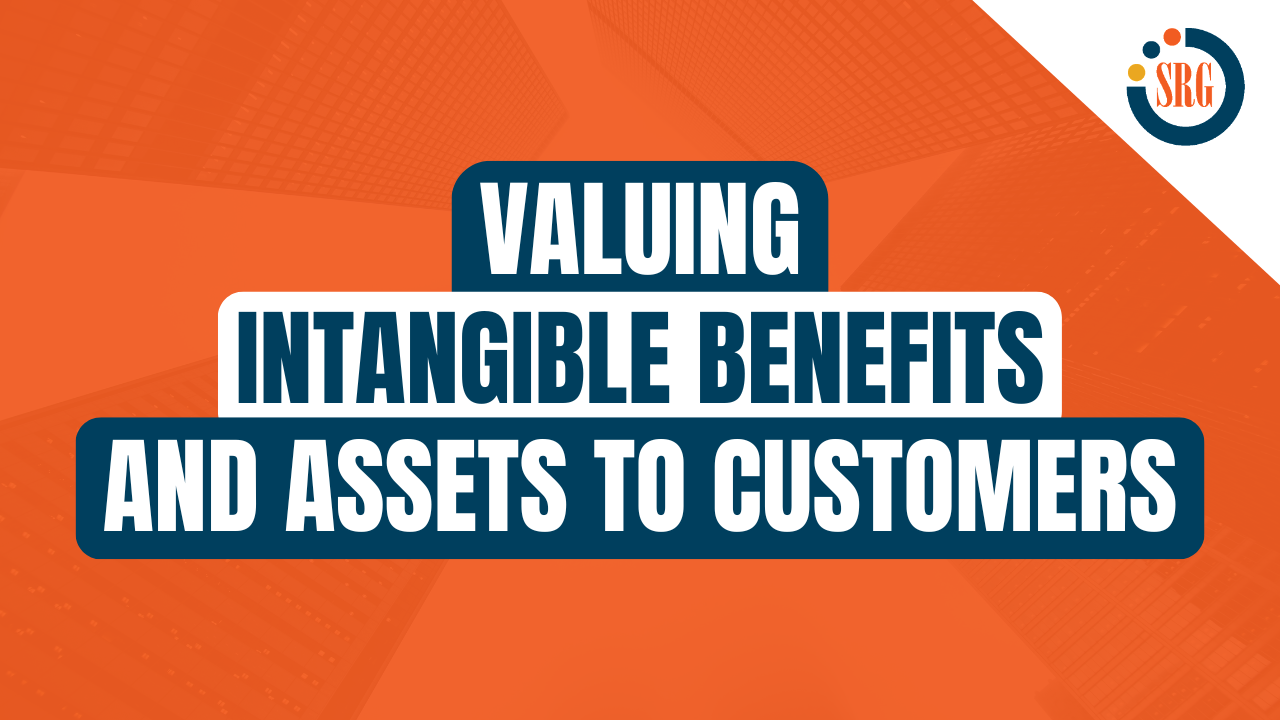
I used to sell software licenses. My customers didn’t even get a box in their hand. I reflected on what I was actually selling to my customers. That’s when I came across the book written by Harry Beckworth, titled “Selling the Invisible.” It resonated with me because it caused me to consider the inherent challenges of selling value where many of the benefits are intangible. What were my customers really buying?
My customers wanted to have an efficient operation with employees who were productively using the desktop and networking software that I was selling. These employees wanted to be productive every day. Together, these elements helped the organization better serve its own customers.
Tangible vs. Intangible Benefits
The definition of value is captured in this simple equation: Value = Benefits – Costs. So how could a software license create value for my customers?
It couldn’t, but the capabilities of the software (i.e., the benefits it creates) would help the organization achieve its business goals. So when I was selling my software licenses, did I talk about features or bits? Well of course I did because I was talking to Information Technology buyers. But I went beyond the features and focused on quantifying both the tangible and intangible benefits of the software. Since many of the benefits of my software were not readily apparent, I had to spend a significant amount of time explaining them to my customers. This helped my customers understand the value my software licenses created for them as well as visualize the future of how they could better serve their customers.
Most sales professional have a solid grasp on how to sell tangible benefits, but selling and valuing intangible assets is much more challenging. Part of this challenge lies in how we distinguish tangible from intangible benefits. Benefits are considered tangible when they are easy for the customer to quantify. For example, projected labor savings as a result of your solution, or lower energy consumption from your more efficient equipment. Other benefits, such as image, are generally considered intangible since they are inherently difficult to quantify.
Here are five common intangible benefits that are often difficult for customers to quantify:
- Image
- Total Cost of Ownership
- Competitive Advantage
- Opportunity Cost
- Time to Market
Complicating our simple definition of intangible benefits is the notion that some benefits may be difficult for some buyers to quantify (intangible) but easy for other buyers to quantify (tangible). For example, I am not sure how I would value the “image” benefit of my car. On the other hand, a rental company will have a very sophisticated understanding of how the different car brands and models in its car rental fleet effect its market position. So like any discussion about benefits, whether we classify the benefit as tangible or intangible depends on each specific buyer.
Quantifying the Intangible
The key to selling an intangible benefit is helping the customer quantify the intangible benefit into bottom-line dollars and thus turning the intangible into something tangible. The first step in quantifying intangible benefits is to be pro-active and look for opportunities where your solution can benefit the customer. This means learning your customer’s business, operations, customers and goals by constantly asking questions, and expanding your organizational contacts and knowledge within the customer.
For the less obvious intangible benefits, you need to ask you clients how they calculate Total Cost of Ownership, improve their competitive advantage, enhance their image, reduce opportunity costs or reduce the time to market. In some cases, the customer may not know and you will need to have a conversation with the customer on what they think that dollar amount would be. You can come to such meetings with case studies explaining what happened to companies who improved their company image, or were able to get their product to market before the competition. The goal is to identify situations and opportunities that can lead to improved efficiencies, cost savings, or increased revenue and profit.
In competitive selling situations, success often goes to those sales professionals who are able to demonstrate that their solution can create the most value for the buyer. This means quantifying both the tangible and intangible benefits of your solution.

